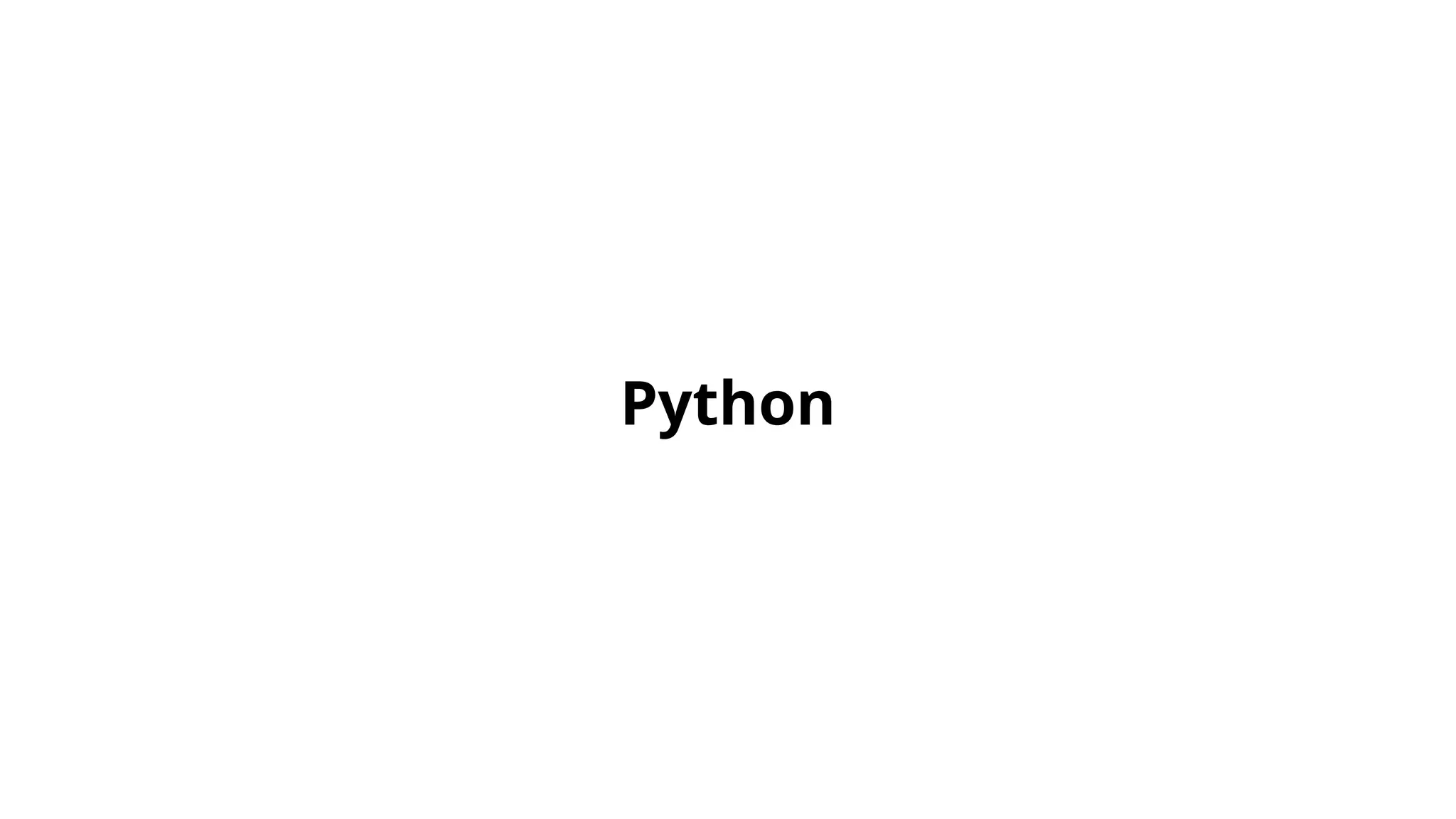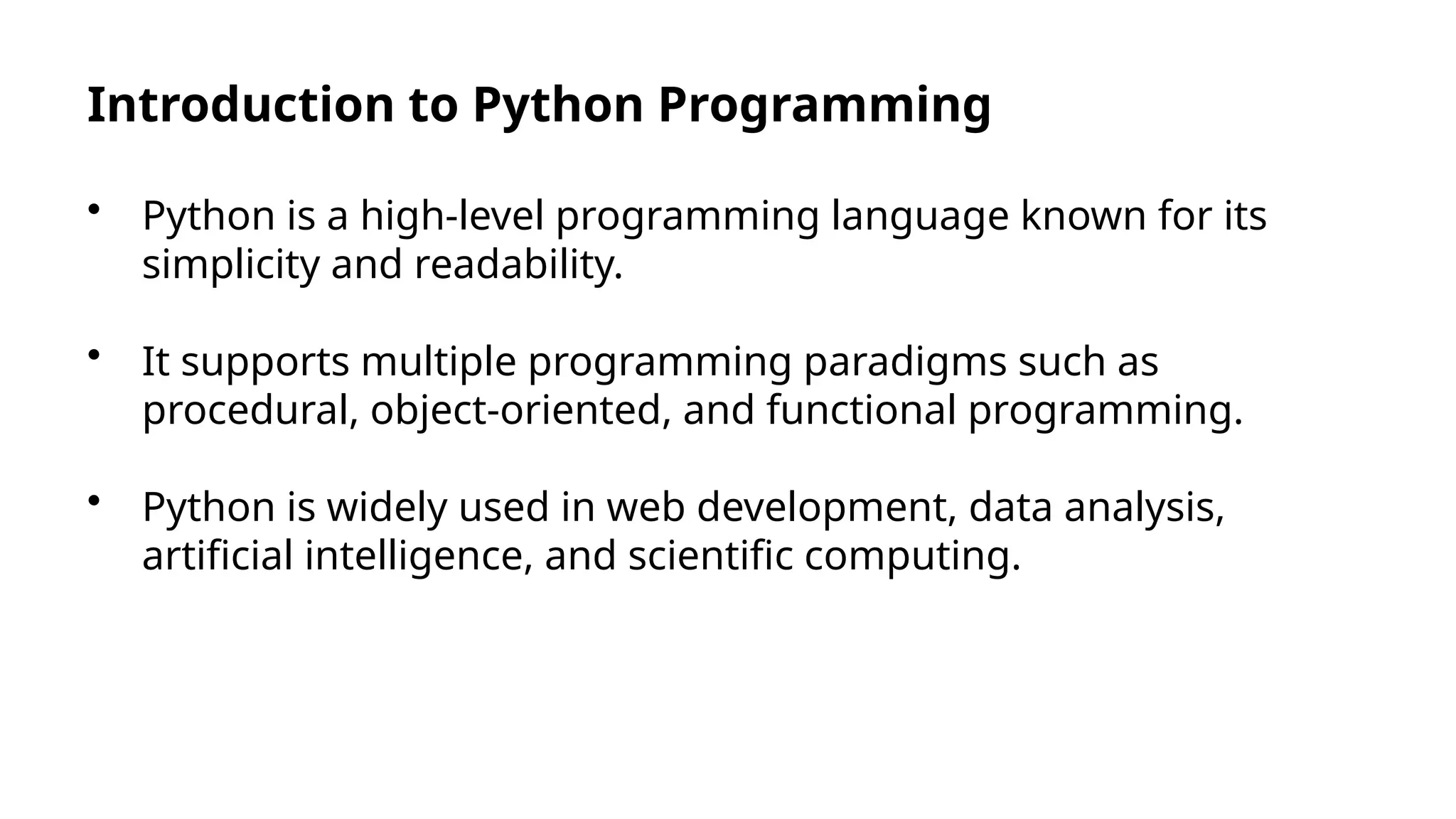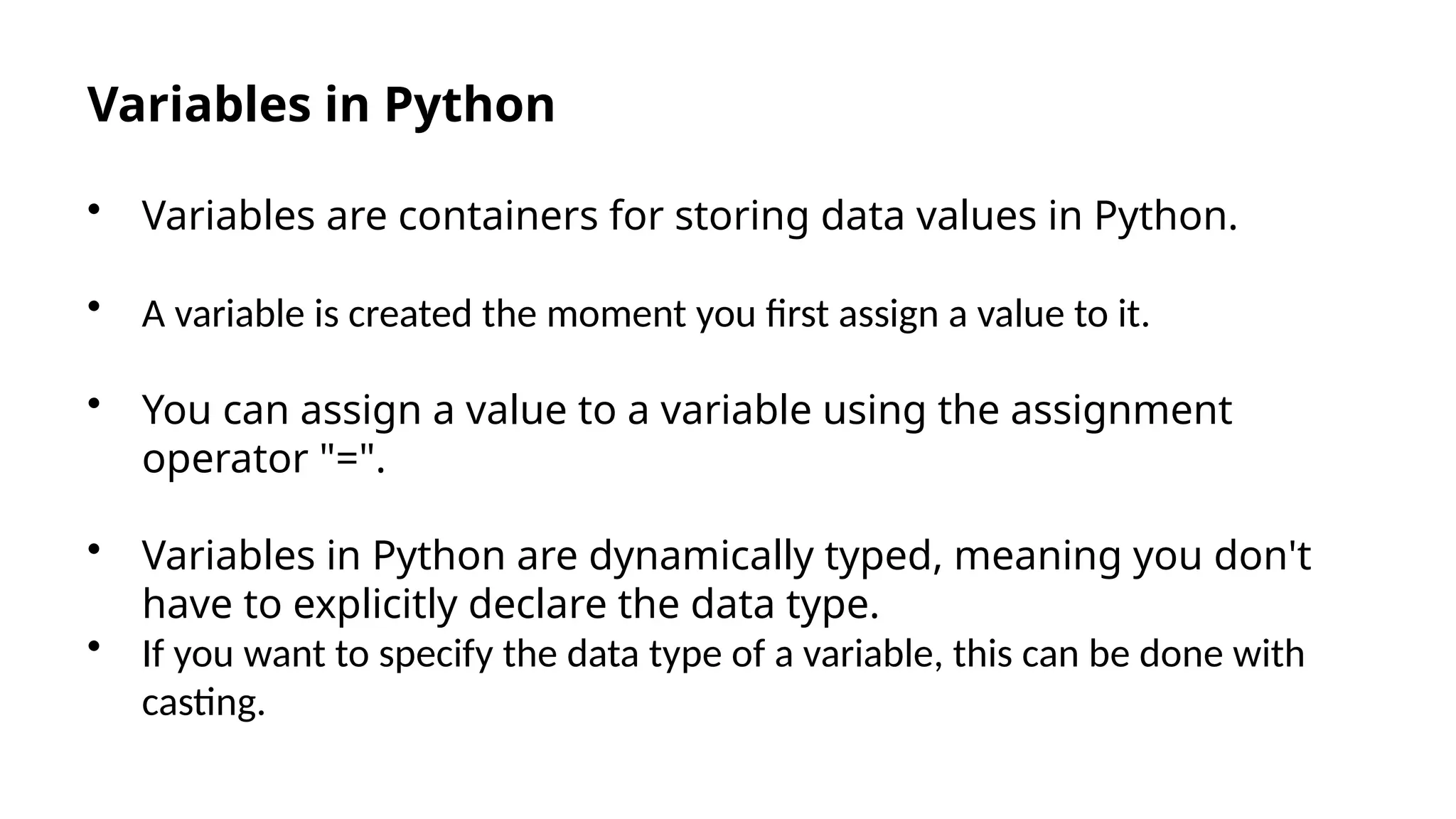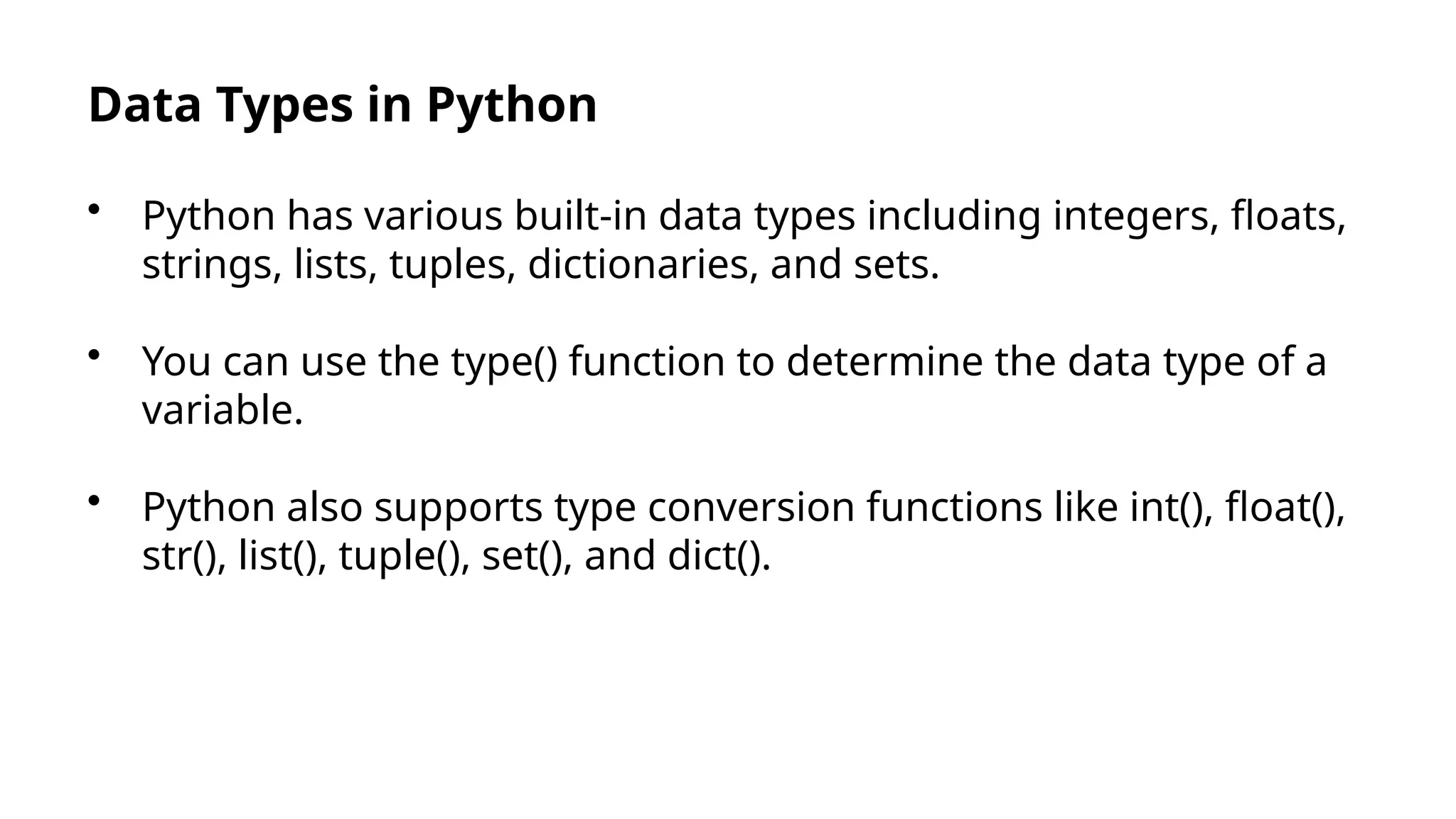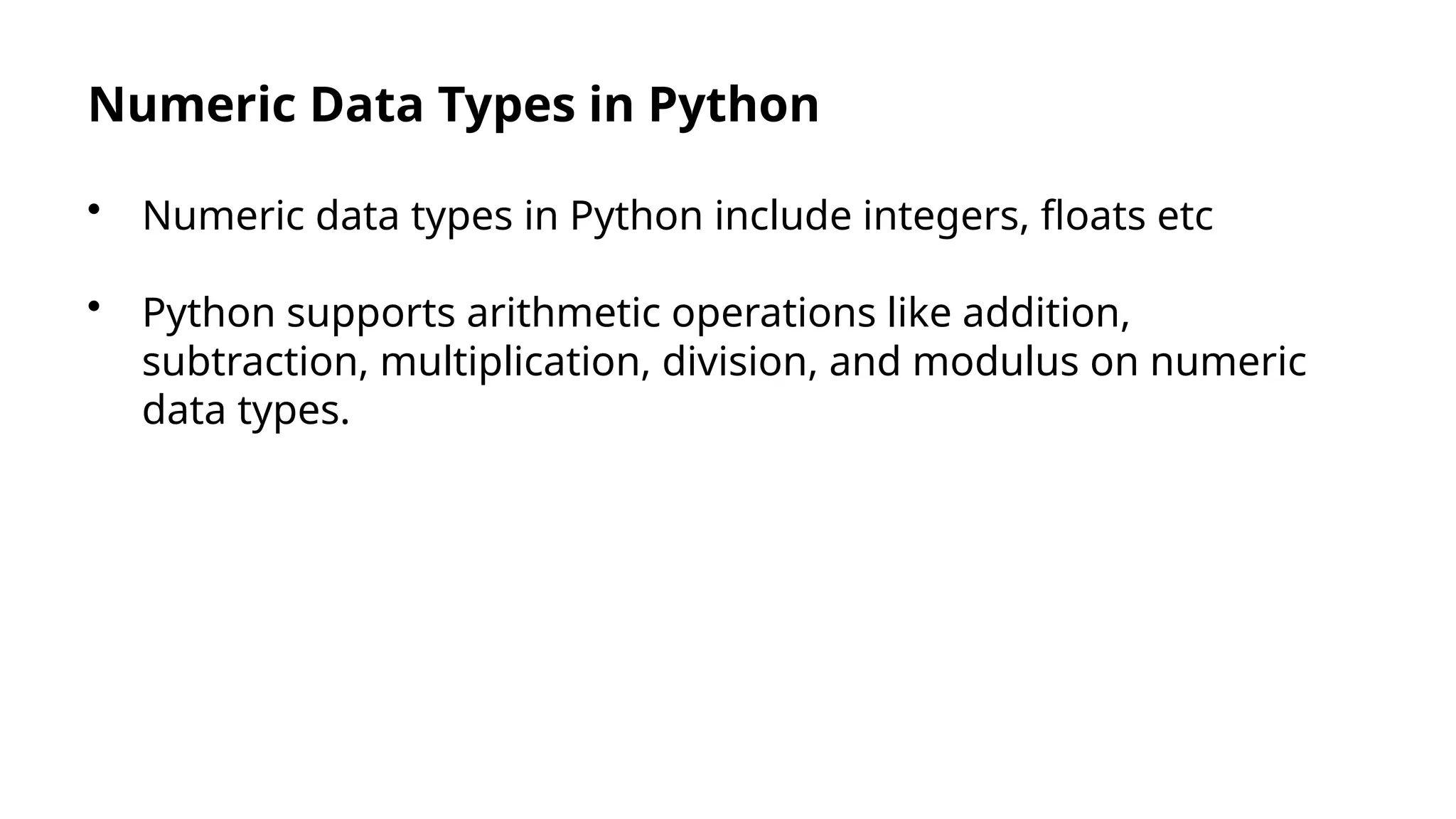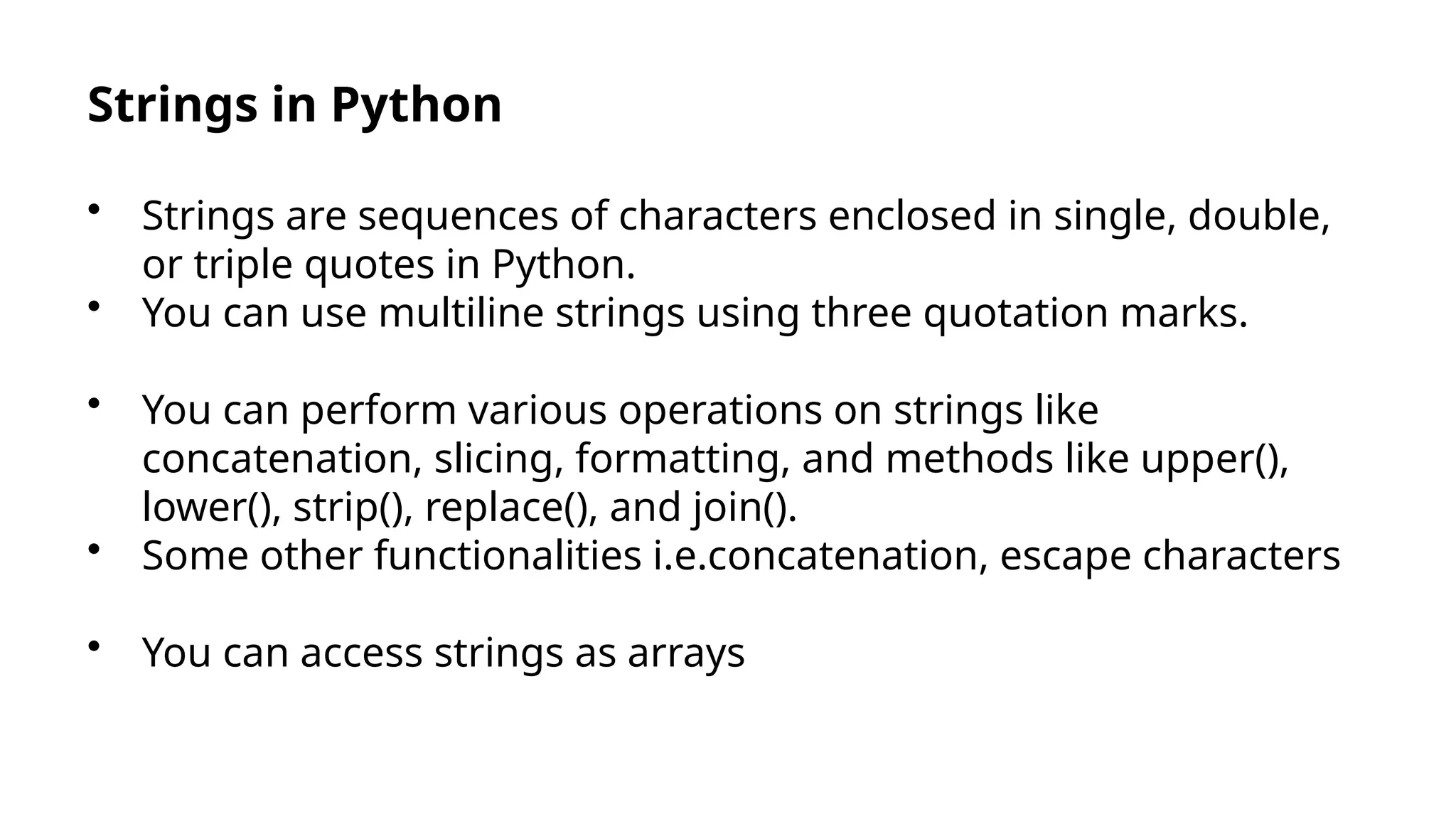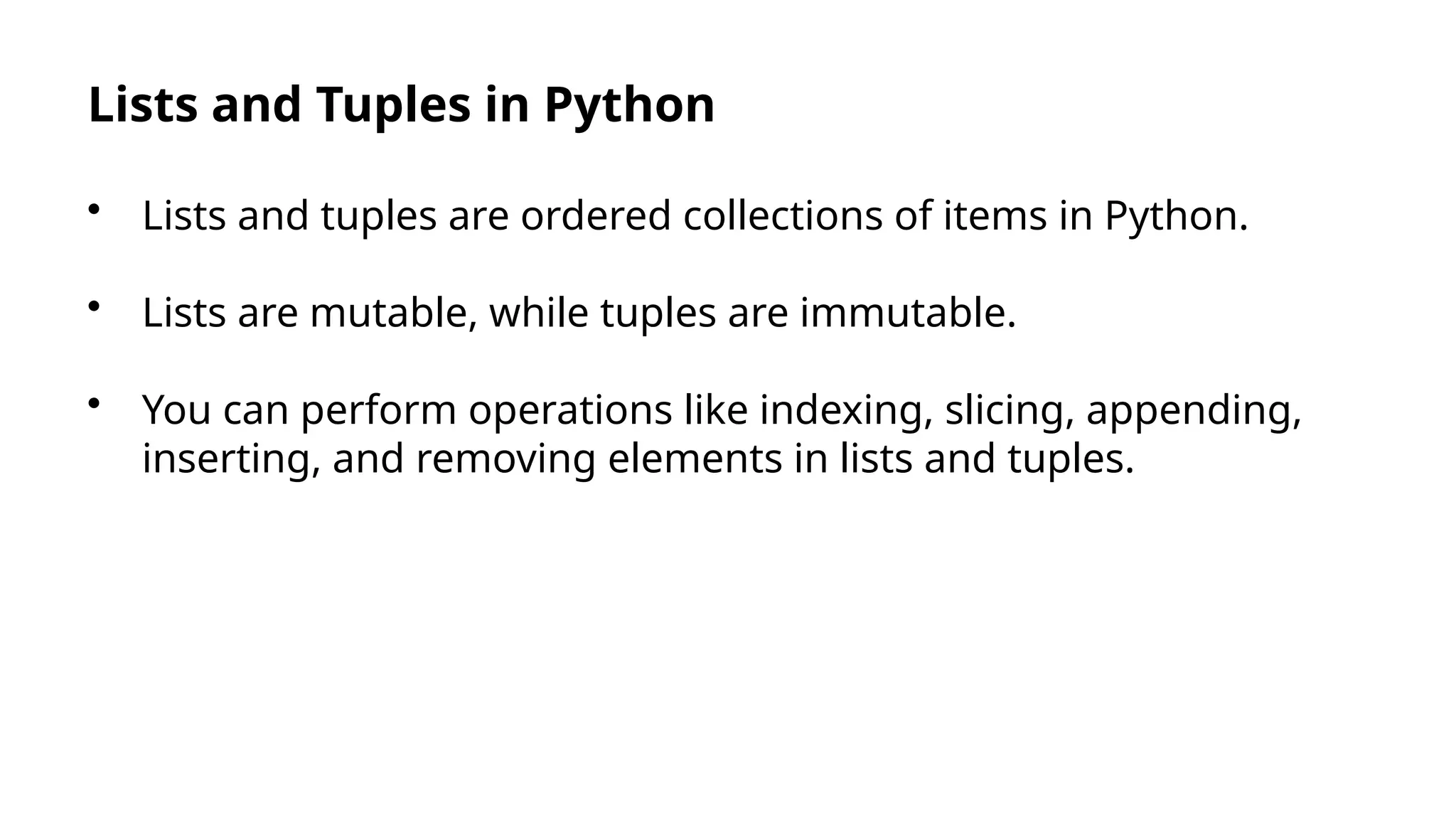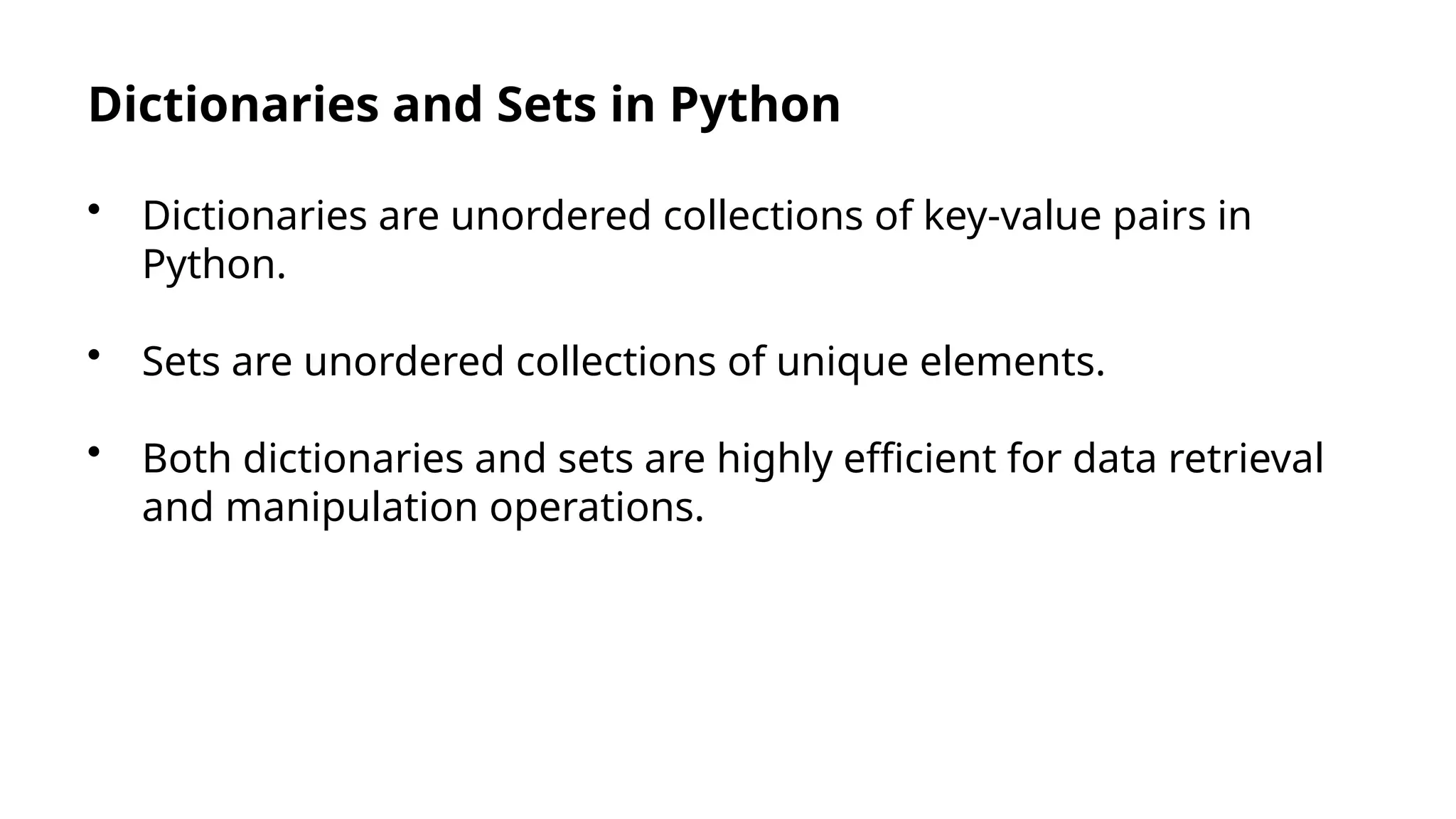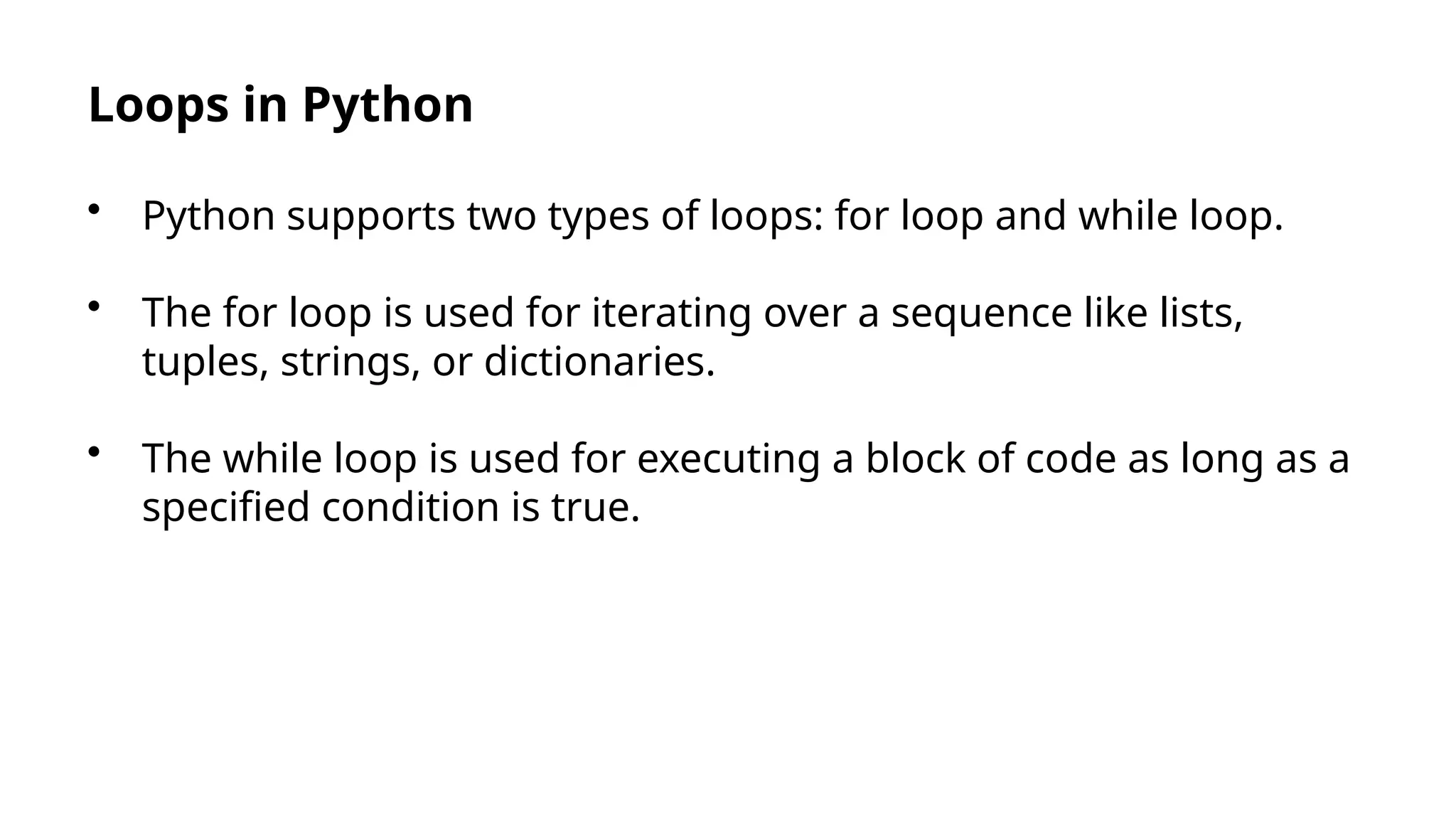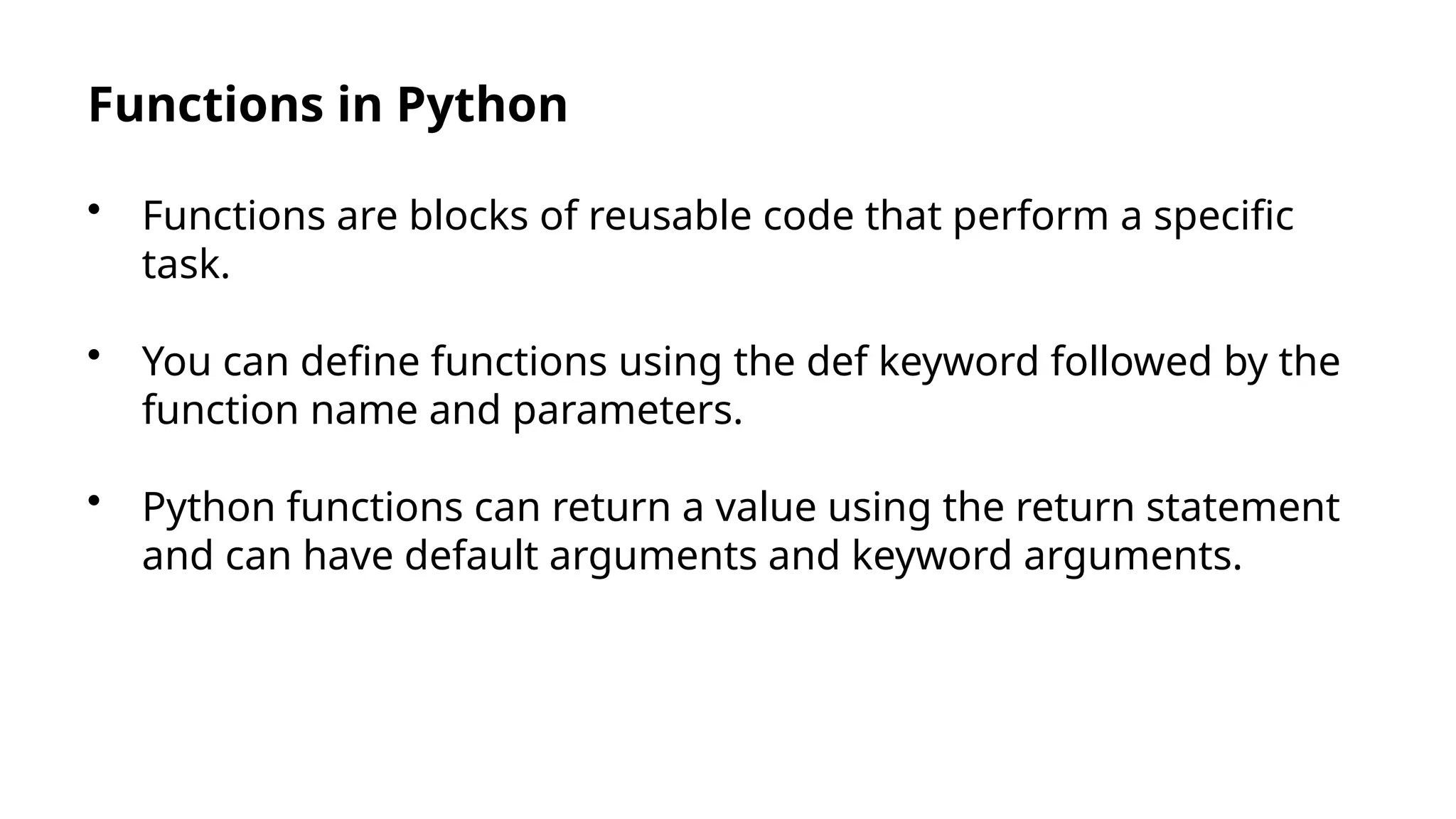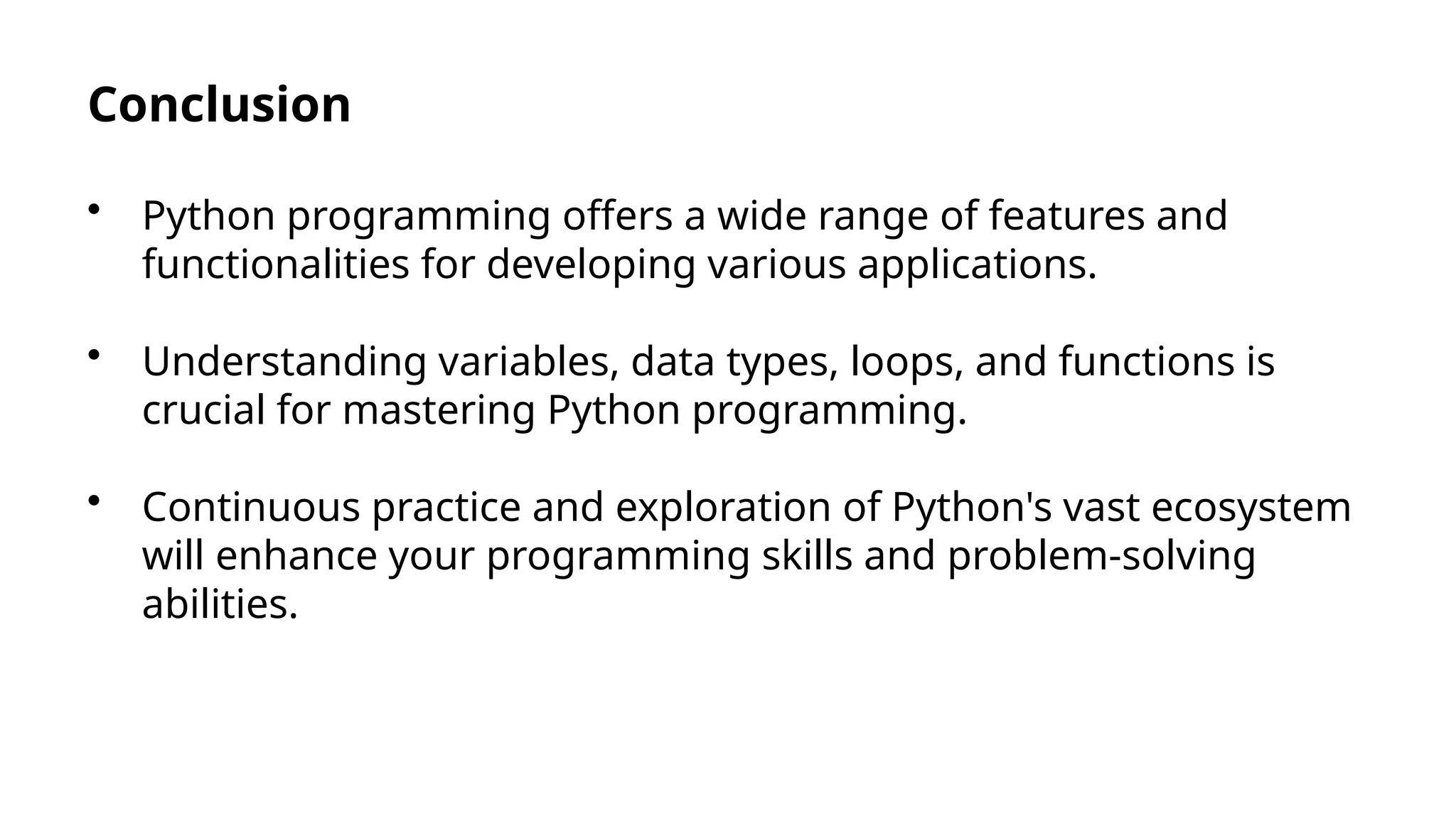This document provides an introduction to Python programming, outlining its high-level nature, support for multiple paradigms, and applications in various fields. It covers essential concepts such as variables, data types, loops, and functions, emphasizing their significance in programming with Python. The conclusion highlights the importance of continuous practice and exploration to enhance programming skills and problem-solving abilities.
